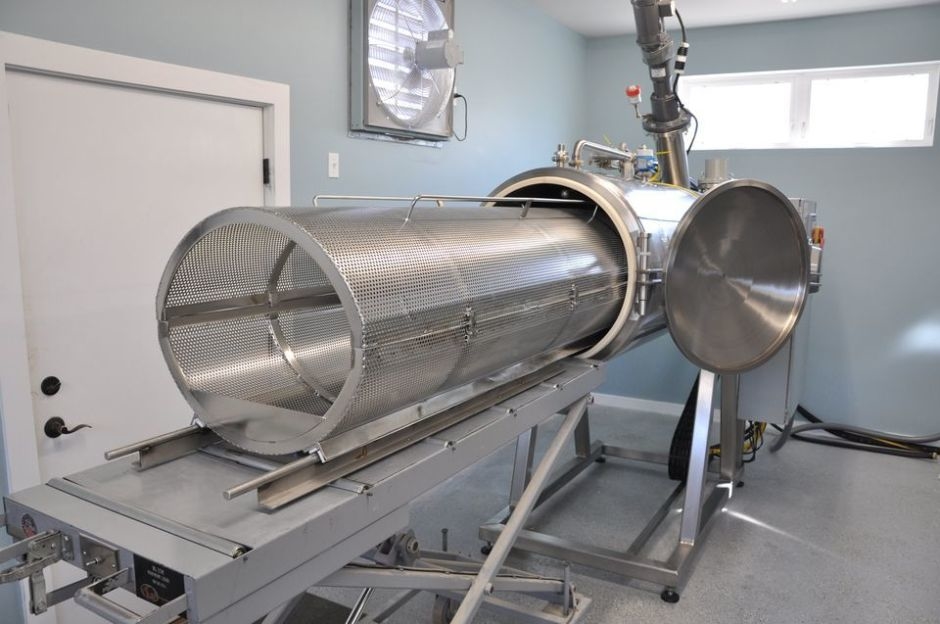


Bio cremation or resomation is based on a process called alkaline hydrolysis. The corpse is placed in a chamber that is filled with 95% water and 5% alkali that is then heated to around 160°C or 320 °F. The water never reaches the boiling point and instead, breaks the body down into its chemical components. In other words, skin, muscle and tissue are dissolved, leaving only the bones. This process takes around 3 hours to complete.
Once the process is complete, what is left is a greenish brown liquid made up of amino acids, peptides, sugars and salts, including an intact, white skeleton. The bones, which are now soft and porous, can easily be crushed and returned to the next of kin. This process is similar to regular, fire cremation in which only the bones remain. From there families can choose to bury the ashes, keep them on display or place them in a niche. The liquid which remains is drained into the city’s sewer system or can be spread in a green space, as it is considered safe and biodegradable.